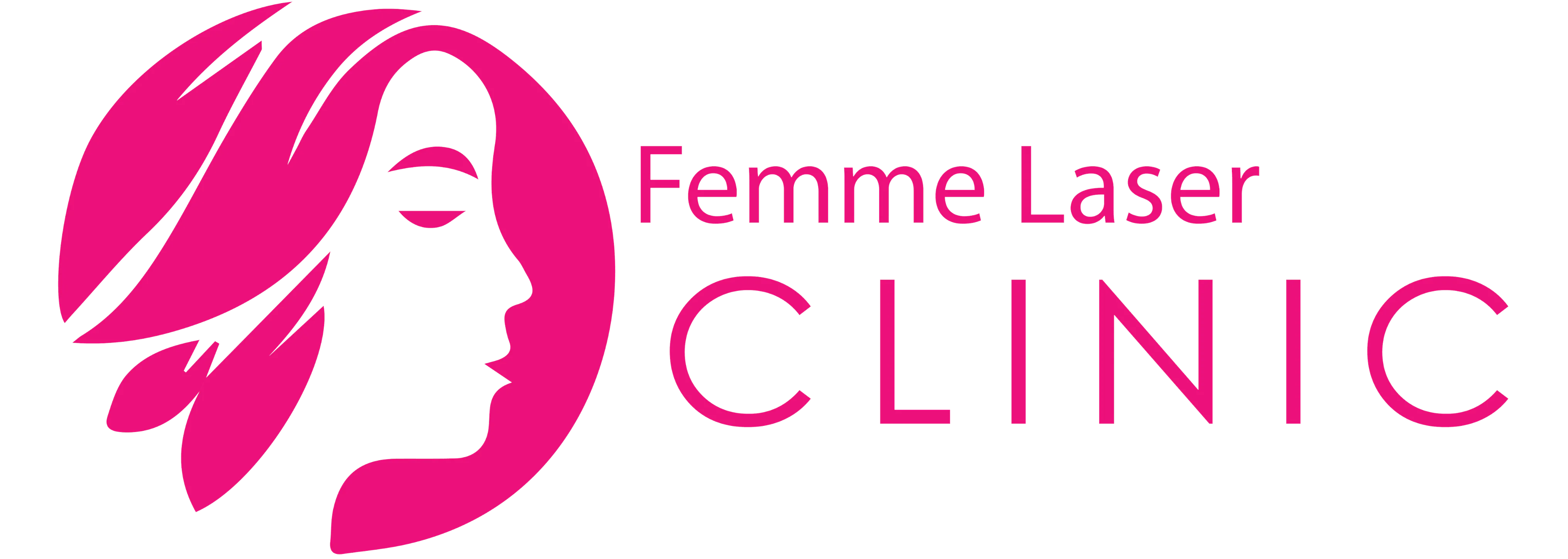Laser hair removal is a popular cosmetic procedure that involves using a laser to remove unwanted body hair. It is a safe and effective method for long-term hair reduction, and it has become increasingly popular in recent years. However, many people still wonder if laser hair removal will work for them and what to expect …
Laser hair removal is a popular cosmetic procedure that involves using a laser to remove unwanted body hair. It is a safe and effective method for long-term hair reduction, and it has become increasingly popular in recent years. However, many people still wonder if laser hair removal will work for them and what to expect from the procedure.
So, what exactly is laser hair removal?
Laser hair removal is a cosmetic procedure that uses concentrated beams of light to target and destroy hair follicles, preventing future hair growth in the treated area. The procedure is most commonly used to remove hair on the face, legs, arms, underarms, and bikini area.
Different types of lasers are used for hair removal, and the effectiveness may vary depending on skin tone, hair color, and other factors. Some of the most common types of lasers used for hair removal include Alexandrite, Diode, Nd:YAG, and IPL (Intense Pulsed Light).
Now, who is a good candidate for laser hair removal?
Generally, laser hair removal works best on people with lighter skin and darker hair. This is because the laser targets the pigment in the hair, which absorbs the light and destroys the follicle. People with lighter hair may not see the same results as those with darker hair.
Some of the pros of laser hair removal include long-lasting results, minimal pain, and precision in targeting specific areas. However, there are also some cons to consider, such as the potential for skin irritation, temporary redness, and the need for multiple sessions.
To prepare for laser hair removal, it is essential to avoid sun exposure and certain hair removal methods, such as waxing or plucking, for a few weeks before the procedure. During the procedure, patients may experience a slight tingling or snapping sensation, but it is generally well-tolerated.
The number of sessions required for permanent hair removal varies depending on the individual, but most people will need multiple sessions to achieve the desired results. After the procedure, patients may experience slight redness and irritation, but these side effects are temporary.
It is essential to note that laser hair removal may not be safe for all skin types, particularly those with darker skin tones. It is always best to consult with a medical professional to determine if you are a good candidate for the procedure. With proper preparation and aftercare, laser hair removal can be an effective way to permanently reduce unwanted body hair.
Table of Contents
ToggleWhat Is Laser Hair Removal?
Laser hair removal is a popular cosmetic procedure that utilizes concentrated light to eliminate unwanted hair. This light energy is converted into heat, which effectively damages the hair follicles and prevents future hair growth. It is a highly effective treatment for various areas of the body, such as the face, legs, arms, underarms, and bikini line, and offers long-lasting results with minimal discomfort.
Pro-tip: To minimize the risk of complications, it is important to avoid sun exposure before and after the treatment.
How Does Laser Hair Removal Work?
- Consultation: A dermatologist will assess your skin type and hair color to determine the most effective laser for your laser hair removal treatment.
- Preparation: Before the session, make sure to shave the treatment area to allow the laser to target the hair follicles directly.
- Laser treatment: During the session, the technician will pass the laser over the area, emitting light that will be absorbed by the melanin in the hair follicles. This process damages the follicles and inhibits future hair growth.
- Post-treatment care: After the treatment, it is important to use soothing lotions and avoid sun exposure to aid in the recovery process.
Who Is a Good Candidate for Laser Hair Removal?
Factors such as hair color and skin type determine who is a good candidate for laser hair removal. Ideally, those with light skin and dark hair are the best candidates as the laser targets the melanin in the hair follicle. However, with advancements in technology, laser hair removal has become effective for a wider range of skin tones. It is crucial to consult with a qualified professional to determine if you are a suitable candidate for the procedure.
What Are the Pros and Cons of Laser Hair Removal?
Laser hair removal has become a popular option for those seeking a long-term solution to unwanted body hair. However, like any other cosmetic procedure, it has its own set of pros and cons. In this section, we will discuss the potential benefits and drawbacks of laser hair removal, so you can make an informed decision about whether it is the right choice for you. From its effectiveness to potential side effects, we will cover all aspects of this procedure. So, let’s dive in and explore the pros and cons of laser hair removal.
Pros:
- Pros of laser hair removal include:
- Reduced hair growth
- Long-lasting results
- Minimal side effects
- Effective on large areas
- Improves skin texture
Cons:
- Possible discomfort: Laser hair removal can cause slight pain or discomfort during the procedure.
- Skin irritation: Some individuals may experience redness, swelling, or irritation in the treated area.
- Potential for skin changes: Skin pigment may alter, resulting in darker or lighter spots.
- Risk of burns: Inexperienced technicians or incorrect settings can lead to burns or blisters.
However, a friend experienced temporary redness and slight discomfort after laser hair removal, but she found the results to be worth it. She found the procedure to be a convenient and effective solution for long-term hair reduction.
From alexandrite to IPL, lasers are like the Avengers of hair removal – each with its own superpower.
What Are the Different Types of Laser Hair Removal?
When it comes to laser hair removal, there are a variety of options available on the market. Each type of laser uses a different wavelength and technology to target and remove unwanted hair. In this section, we will discuss the four main types of laser hair removal: Alexandrite, Diode, Nd:YAG, and IPL. By understanding the differences between these lasers, you can make an informed decision on which method may be the most effective for your hair removal needs.
1. Alexandrite Laser
- Consultation: Prior to the Alexandrite Laser procedure, schedule a consultation with a licensed professional to assess your skin type, hair color, and medical history.
- Avoid Sun Exposure: Refrain from tanning and sun exposure for at least six weeks before the Alexandrite Laser treatment to minimize the risk of complications.
- Shave Treatment Area: Shave the area to be treated a day before the Alexandrite Laser session to ensure the laser targets the hair follicle accurately.
- Avoid Certain Products: Avoid using skincare products with retinoids or alpha hydroxy acids before the Alexandrite Laser treatment.
- Wear Protective Eyewear: During the Alexandrite Laser procedure, wear protective eyewear to shield your eyes from the laser.
2. Diode Laser
- The Diode Laser treatment is most effective for individuals with light to medium skin tones and dark hair.
- Prior to the procedure, it is important to avoid sun exposure and skin irritants.
- During the process, some discomfort may be experienced, but cooling methods will be utilized to minimize it.
- Aftercare includes moisturizing and protecting the treated area from sun exposure.
- Multiple sessions are recommended for optimal results when utilizing the Diode Laser.
Who knew lasers could solve your hair-raising problems and leave you feeling smooth and confident? The Nd:YAG laser is here to zap away your unwanted hair.
3. Nd:YAG Laser
The Nd:YAG laser is a type of laser commonly used for hair removal. It is effective for all skin types, including tanned skin, and is particularly beneficial for treating individuals with darker skin tones. The Nd:YAG laser has a longer wavelength, allowing it to penetrate deeper into the skin and target hair follicles without causing harm to the surrounding tissue. If you are considering Nd:YAG laser hair removal, it is important to consult a certified practitioner to determine if it is the best option for your specific skin and hair type.
For those with darker skin tones, Nd:YAG laser hair removal is a safe and effective method for achieving long-term hair reduction.
4. IPL
- Intense Pulsed Light (IPL) is a treatment that targets hair pigment using broad-spectrum light.
- Before undergoing the IPL procedure, it is important to avoid sun exposure and skin irritants.
- During the treatment, it is normal to experience sensations similar to rubber band snaps and slight redness.
- Aftercare for IPL involves applying soothing gels and avoiding direct sunlight.
- For optimal results, several sessions of IPL, spaced a few weeks apart, are necessary.
How to Prepare for Laser Hair Removal?
- Consultation: Prior to the procedure, schedule a consultation to discuss the treatment and evaluate your skin and hair type.
- Avoid Sun Exposure: To ensure optimal results, refrain from sun exposure and tanning bed use for at least six weeks before the treatment.
- Avoid Plucking and Waxing: For at least six weeks before your appointment, avoid plucking, waxing, and electrolysis.
- Shave: Before your appointment, make sure to shave the area that will be treated.
- Cleanse the Area: On the day of your appointment, ensure that the area is clean and free of lotions, perfumes, and deodorants.
Over the years, laser hair removal technology has advanced significantly. The concept of using lasers for hair removal was first introduced by a medical professional in 1969. After extensive research and development, the FDA approved the first laser hair removal treatment in the mid-1990s, marking a major breakthrough in the field of cosmetic dermatology.
What to Expect During and After the Procedure?
During the laser hair removal procedure, you can expect to feel a stinging sensation and some slight discomfort. After the session, it is normal to experience redness and possibly some swelling, but this should subside within a few hours. Over the next few weeks, it is typical for hair to shed from the treated area.
Pro-tip: To help ease any discomfort after the procedure, try applying aloe vera gel or a soothing lotion to the treated area.
How Many Sessions Are Required for Permanent Hair Removal?
- Consultation: Schedule an initial consultation with a certified professional to assess your skin and hair type.
- Number of Sessions: To achieve permanent hair removal, it typically requires 6 to 8 sessions, but this can vary based on individual factors.
- Schedule: Sessions are usually spaced 4 to 6 weeks apart to effectively target hair in different growth cycles.
- Aftercare: It is important to follow post-treatment care instructions to ensure the best and longest lasting results.
After completing 8 sessions, my friend experienced long-term hair reduction, which boosted her confidence and simplified her grooming routine.
What Are the Possible Side Effects of Laser Hair Removal?
Possible side effects of laser hair removal include temporary skin irritation, redness, swelling, and pigment changes. In rare cases, blistering, scarring, or other changes in skin texture might occur. However, these side effects are usually temporary and can be minimized by choosing a qualified professional and following pre and post-treatment care instructions.
Is Laser Hair Removal Safe for All Skin Types?
Yes, laser hair removal is generally safe for all skin types. However, it is recommended that individuals with certain skin conditions or those with very dark skin tones consult a dermatologist before proceeding. This is important to ensure that the treatment is suitable for your specific skin type and to minimize the risk of any adverse effects. A pro-tip is to always undergo a patch test to assess your skin’s reaction before committing to a full treatment session.
Frequently Asked Questions
Will laser hair removal work for everyone?
No, laser hair removal is most effective for people with dark colored hair and light colored skin. It may not work as well for people with blonde, red, or white hair. It is important to consult with a board certified dermatologist before undergoing the procedure to determine the best course of action.
What is the difference between laser hair removal and at-home laser treatments?
Laser hair removal is a medical procedure that should only be performed by a trained and experienced medical professional. At-home laser treatments, on the other hand, use weaker and less effective lasers and can be done by individuals at home. It is recommended to seek a professional for safer and more effective results.
Can indoor tanning equipment affect the effectiveness of laser hair removal?
Yes, tanning beds and excessive sun exposure can affect the effectiveness of laser hair removal. Tanned skin can interfere with the laser’s ability to target and destroy hair follicles. It is advised to avoid tanning for at least 6 weeks before and after treatment for optimal results.
How many laser treatments are typically needed to see permanent results?
The number of treatments needed varies for each individual, but on average, 2 to 6 laser treatments are necessary for permanent hair loss. This is because hair follicles must be in the growth stage for the treatment to be effective, and not all follicles are in this stage at the same time.
What are the potential risks of laser hair removal?
The most common risks include burns, scars, and permanent skin discoloration. It is important to have the procedure done by a qualified and experienced medical professional to minimize these risks. Board certified dermatologists have in-depth knowledge and training to perform the procedure safely and effectively.
Is it safe to have laser hair removal done at home?
At-home models may not be as effective or safe as traditional lasers used by medical professionals. Inexperienced hands can also lead to serious damage to the skin. It is best to have the procedure done by a trained medical professional for the best results and minimal risk.






